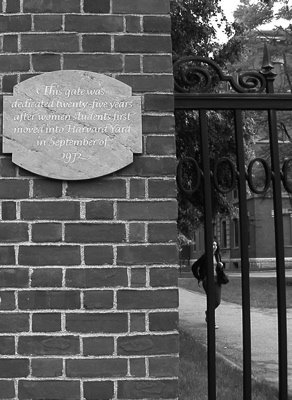Walking Off The Bell Jar: The Long Walk
 On her last night in New York in June of 1953, Esther Greenwood, aka Sylvia Plath, threw her clothes off the roof of the Amazon (Barbizon) Hotel as an expression of her disappointment in what she had hoped to be a promising experience in the city. Disillusioned and tired, she boarded the train home to Wellesley.
On her last night in New York in June of 1953, Esther Greenwood, aka Sylvia Plath, threw her clothes off the roof of the Amazon (Barbizon) Hotel as an expression of her disappointment in what she had hoped to be a promising experience in the city. Disillusioned and tired, she boarded the train home to Wellesley.According to biographers and accounts of fellow interns, she did see at least some of New York beyond the offices of Mademoiselle magazine on Madison Avenue. As part of their official rounds with the fashion magazine, the "co-eds" toured the UN, danced at the Forest Hills tennis club, attended several theaters for plays and films, took in a Yankees-Tigers game (the Yankees beat the Brooklyn Dodgers in the World Series that year), and clinked glasses at a Fifth Avenue private reception. One day an editor at the magazine took one of Plath's fellow interns out to meet poet Dylan Thomas, one of Plath's favorite writers. Plath wasn't in the office that day, and according to Connie Ann Kirk's biography, she became enraged with the missed opportunity. She then tried to meet Thomas on her own, hanging around outside his hotel room and his favorite tavern (most certainly, the White Horse on Hudson) for the following two days. Kirk observes that her reaction was out of proportion to the incident.
Plath spent part of the summer preparing an application for visiting writer Frank O'Connor's fiction class at Harvard, and while she was late in sending it in, she assumed that she would spend the rest of the summer in Cambridge. Upon arrival in Wellesley, her mother came to pick her up, and on the drive home told her daughter that her application was denied. In The Bell Jar, Esther remembers her reaction - "The air punched out of my stomach." But, then again, she conditioned herself to disillusionment and expected it.
The following days are filled with self-imposed isolation, sleeplessness, and despair. The road eventually leads to the hospital for shock therapy and then suicide attempts. Finally, she manages to get her hands on the sleeping pills her mother has hidden and then leaves a note, "I am going for a long walk."
She didn't go out for a walk. She took the sleeping pills with her, shoved herself into a crawl space under the porch of her house, and then started talking the pills one by one. During the course of a widely publicized search for the young author, she was eventually found, semi-conscious, and taken to the hospital. Subsequent stays in a better mental facility helped her recover a sense of self. Plath later moved to England, married poet Ted Hughes, had two children, and wrote an extraordinary body of poetry. In 1962, just as she was finding a new brave literary voice, her marriage disintegrated and her depression returned. She took her own life on February 11, 1963.
This past weekend, I was invited to Harvard University to introduce the film, Painters Painting, by Emile de Antonio, at the Harvard Film Archive. The morning of the talk I walked around the campus, exploring the famed Harvard Yard, Le Corbusier's stunning Carpenter Center for the Visual Arts (see my photos here at Flickr WOTBA), and the side streets off campus. I came across a gate with a plaque that commemorates the 25th anniversary of the first women students moving into Harvard Yard in September of 1972. I thought about reading The Bell Jar so long ago and my decision to take a different path. Given the important role that the book played in my pre-collegiate life, I felt I had finally walked it off.
Image: a gate to Harvard Yard, June 30, 2008. Walking Off the Big Apple
See related posts:
Walking Off The Bell Jar: The United Nations, a Simultaneous Translator, and the World Beyond the 1950s
Walking Off The Bell Jar: The Wicked City
Walking Off the Sultry Summer of 1953: The New York of the Bell Jar






Comments
Post a Comment